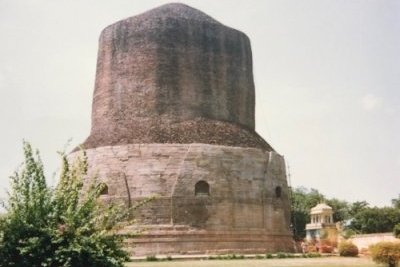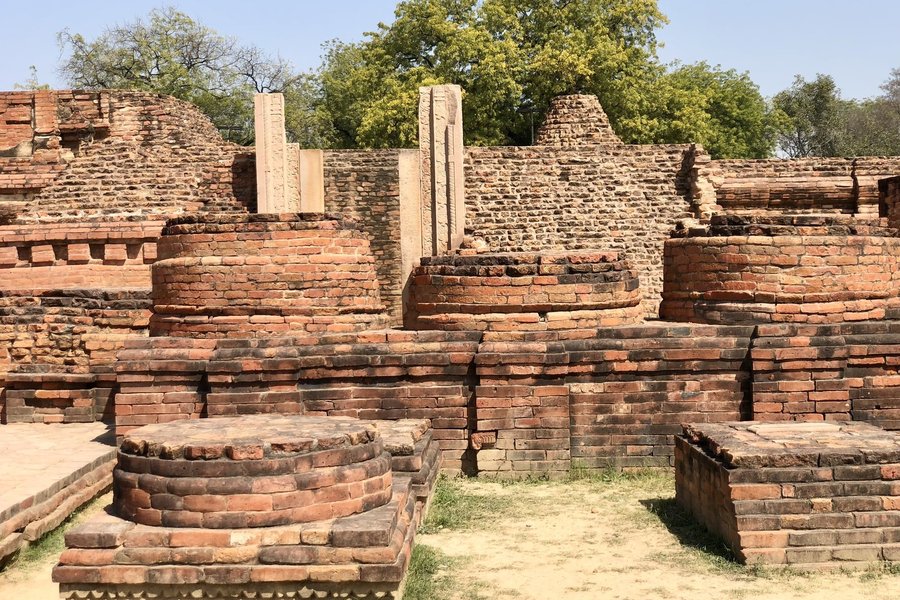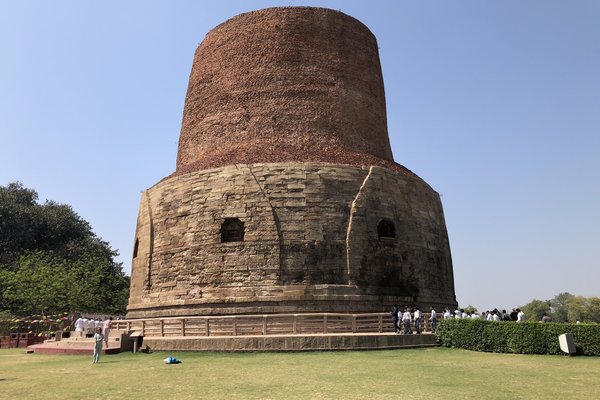India
Sarnath
Sarnath is one of the four places of Buddhist pilgrimage.
The Deer Park in Sarnath is where Gautama Buddha first taught the Dharma.
Several remains of temples, stupas and monasteries from the 3rd century B.C. to the 12th century A.D. can be found here. Also, the base of an Ashoka Pillar has survived.
Site Info
Official Information
- Full Name
- Ancient Buddhist Site, Sarnath, Varanasi (ID: 1096)
- Country
- India
- Status
-
Nominated 2026
Site history
History of Sarnath
- Type
- Cultural
- Criteria
- ii
- iii
- iv
- vi
Links
- UNESCO
- whc.unesco.org
All Links
UNESCO.org
- whc.unesco.org — whc.unesco.org
Community Information
- Community Category
- Religious structure: Buddhist
- Archaeological site: South (East) Asian
Travel Information
Recent Connections
News
No news.
Recent Visitors
Visitors of Sarnath
- AC
- Alexander Parsons
- Alex Goh
- AlexSchedel
- Ali Zingstra
- AmyAbroad
- Bernard Joseph Esposo Guerrero
- Bram de Bruin
- Claire Bradshaw
- Clyde
- Dimitar Krastev
- DouglasR
- Elis
- Els Slots
- Erik Jelinek
- Geert Luiken
- George Gdanski
- Grzegorz Andruszkiewicz
- Hdhuntphotography
- Javier
- Javier Coro
- jonathanfr
- Kurt Lauer
- Lucio
- Ludvan
- Luke LOU
- Mahuhe
- Marton Kemeny
- MMM
- Monica Tasciotti
- Pieter Dijkshoorn
- Priyaranjan Mohapatra
- Riccardo Quaranta
- Sergio Arjona
- Solivagant
- Stanislaw Warwas
- Tevity
- Timothy C Easton
Community Reviews
Show full reviews
Sarnath is an important Buddhist pilgrimage site just outside Varanasi, 1 of the 4 most spiritually rewarding sites pointed out by Gautama Buddha himself. Or as I have seen it described less poetically: “the location where Buddha gave his first sermons in a deer park”. There are some indications that Sarnath might be India’s nomination for 2021. Maybe surprising, as it has been lingering on the Tentative List since 1998 without noticeable action. The recent reports in the news state that “a 600 page nomination dossier is being prepared” – which may even take a few years beyond 2021!
I visited Sarnath on a North India trip in 1993. I did consider Varanasi the highlight of that trip, but I have no notes about nearby Sarnath left. The photo album contains 4 photos labelled ‘Sarnath’, which is quite a lot from pre-digital times:
- The first one is of a Golden Temple. Online research shows this is the Kashi Vishwanath temple – not in Sarnath at all but a Hindu temple in Varanasi!
- On to the second one: displaying an archaeological site, with a stupa in the far distance. It resembles Ayutthaya. These are the remains of ancient monasteries at Sarnath. There is a white covered structure as well, does it hold the remains of the lowest foundation of the Ashoka pillar?
- The third one is the iconic view of the massive Dhamekh Stupa. This is supposedly erected at the exact place where Buddha gave his …

Visited this site for the 2012 Kalachakra. Very spiritual place and quite an interesting archaeology museum too. Easily reachable by taxi from Varanasi.
Keep reading 0 comments
